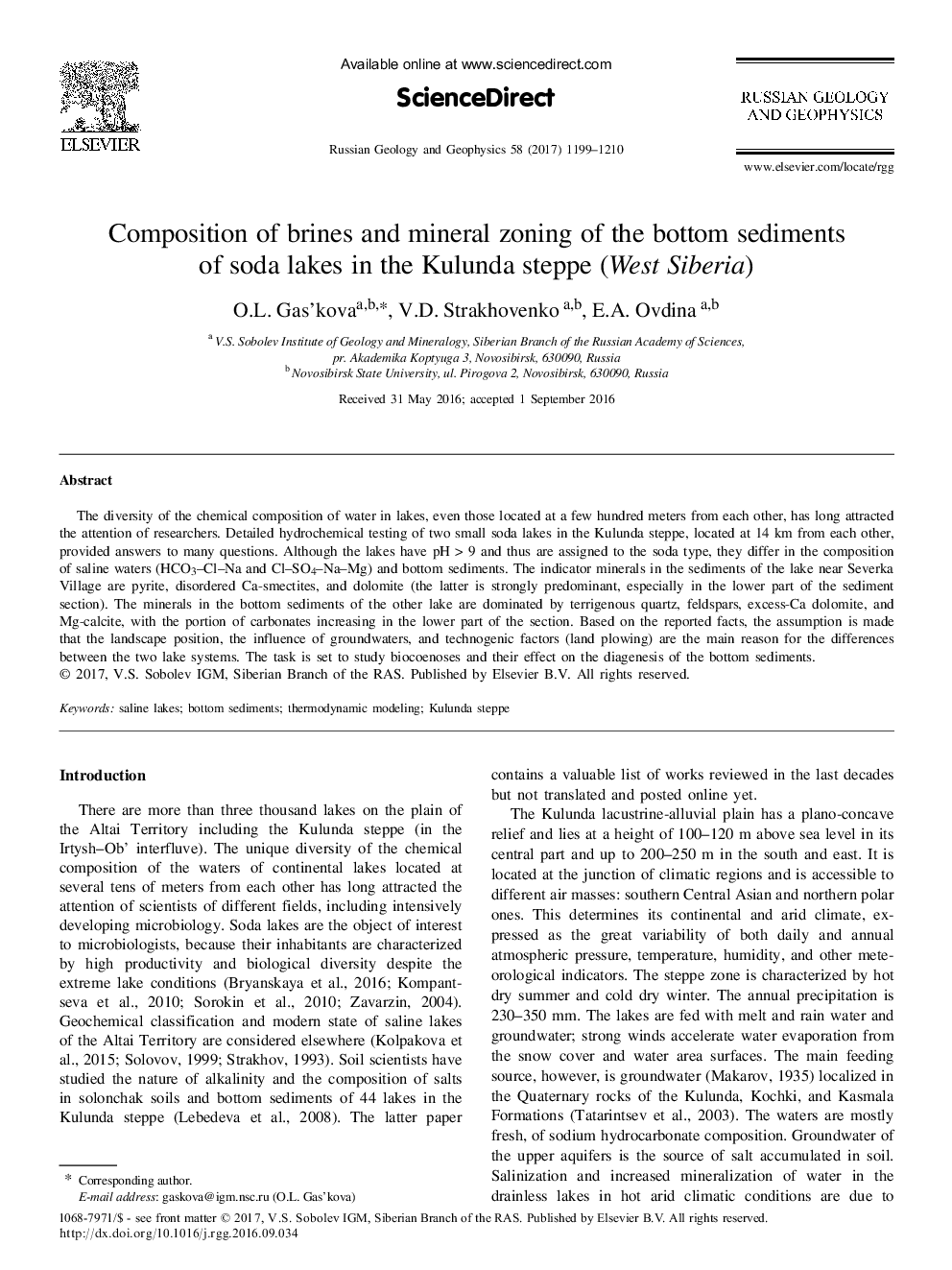| Article ID | Journal | Published Year | Pages | File Type |
|---|---|---|---|---|
| 5786874 | Russian Geology and Geophysics | 2017 | 12 Pages |
Abstract
The diversity of the chemical composition of water in lakes, even those located at a few hundred meters from each other, has long attracted the attention of researchers. Detailed hydrochemical testing of two small soda lakes in the Kulunda steppe, located at 14 km from each other, provided answers to many questions. Although the lakes have pH > 9 and thus are assigned to the soda type, they differ in the composition of saline waters (HCO3-Cl-Na and Cl-SO4-Na-Mg) and bottom sediments. The indicator minerals in the sediments of the lake near Severka Village are pyrite, disordered Ca-smectites, and dolomite (the latter is strongly predominant, especially in the lower part of the sediment section). The minerals in the bottom sediments of the other lake are dominated by terrigenous quartz, feldspars, excess-Ca dolomite, and Mg-calcite, with the portion of carbonates increasing in the lower part of the section. Based on the reported facts, the assumption is made that the landscape position, the influence of groundwaters, and technogenic factors (land plowing) are the main reason for the differences between the two lake systems. The task is set to study biocoenoses and their effect on the diagenesis of the bottom sediments.
Related Topics
Physical Sciences and Engineering
Earth and Planetary Sciences
Geology
Authors
O.L. Gas'kova, V.D. Strakhovenko, E.A. Ovdina,
